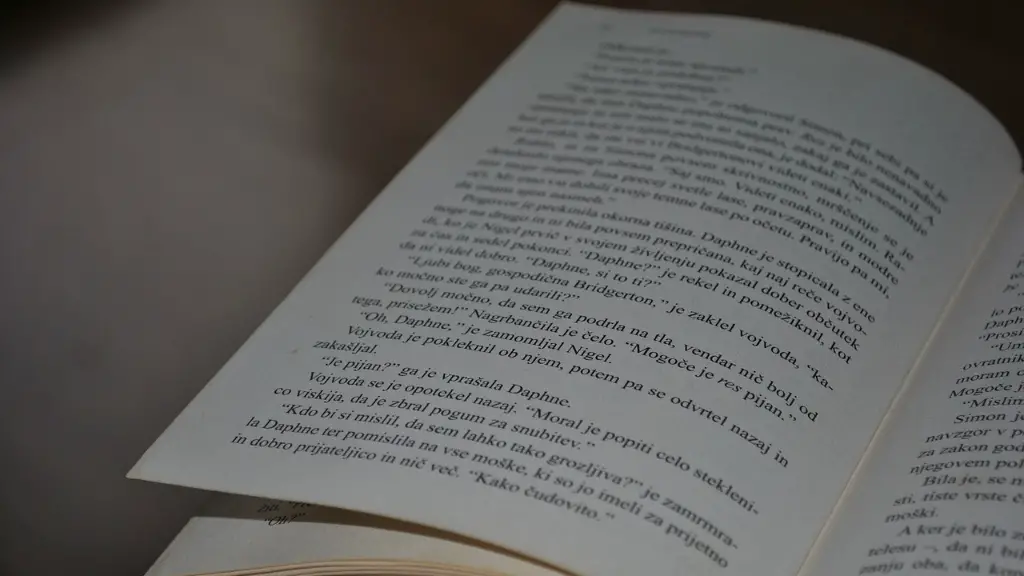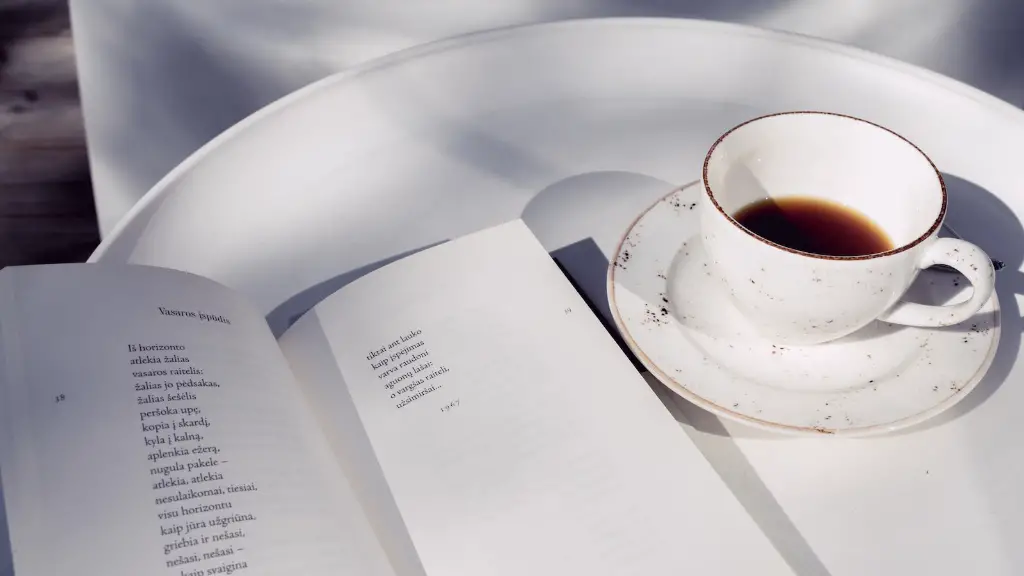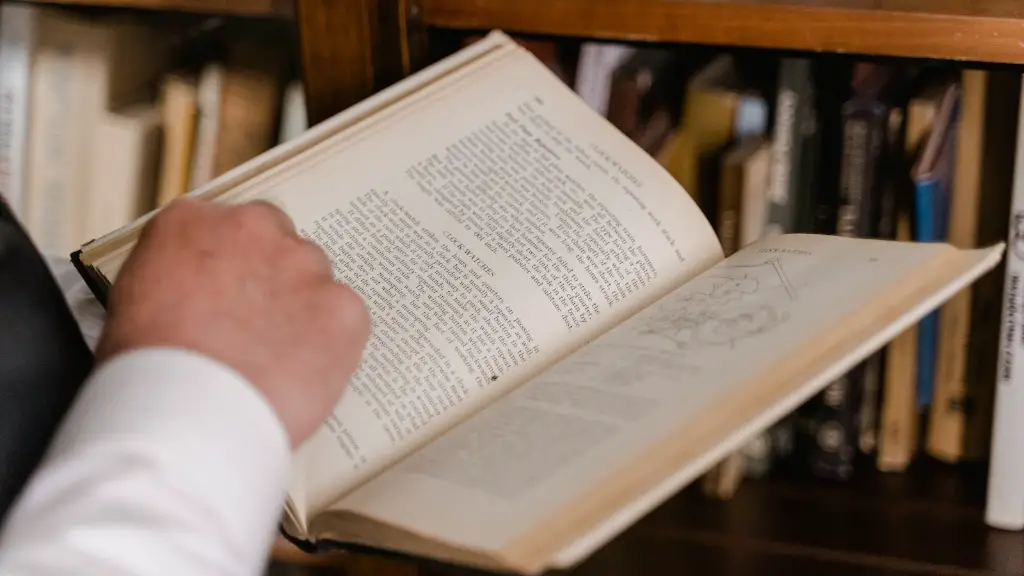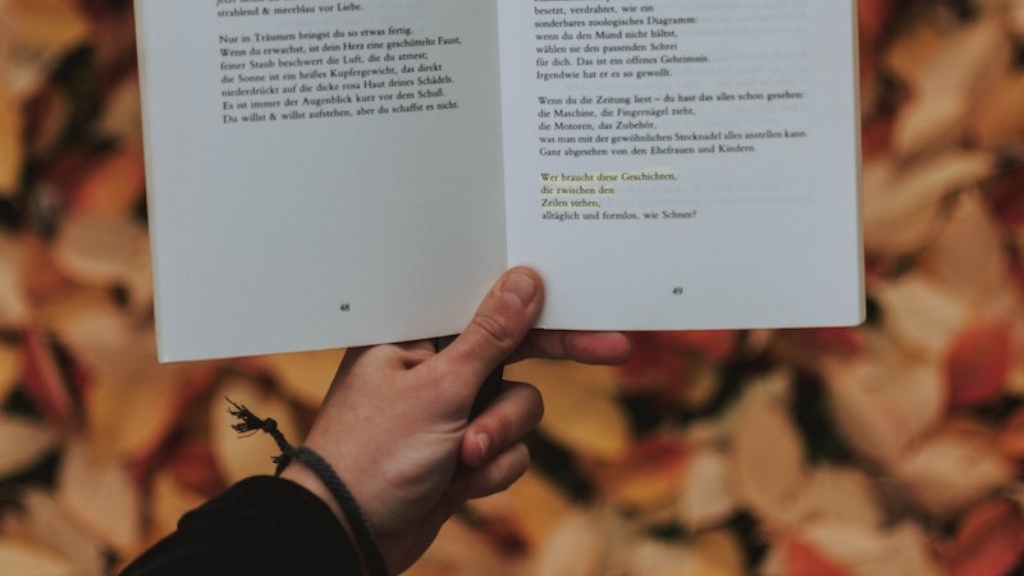A stanza is a poetic way of organizing big chunks of words into smaller lines, with each line carrying a proportionate weight of meaning and emotion. Poets use stanzas to break up their work into coherent, manageable and aesthetically pleasing parts, thus adding more detail, structure and rhythm to the poem. They often act as a visual aid in helping readers understand the poem’s main ideas and themes.
Stanzas are vital elements of traditional poetry and can be found in many works of poetry around the world. They are also sometimes referred to as “verses” or “lines”. Each stanza can have its own distinct character, tone and purpose, which can help the reader make sense of the poem and its overall theme. Stylistically, stanzas are also great tools for creating a certain mood, atmosphere or imagery.
In terms of structure, a stanza can take many forms. The most common type is a quatrain, which consists of four lines with a specific rhyme scheme. Another popular stanza is the sestet, which is made up of six lines and usually follows a particular pattern of rhyme. Other stanzic forms, such as the sonnet, contain even more lines and have more specific rules regarding rhyme and meter.
The type of stanza used in a poem can help to convey the poem’s theme and emotion. For example, a quatrain often evokes a particular mood or emotion associated with the rhyme scheme used, such as the happy-go-lucky rhythm of a ballad or light-hearted limerick. Similarly, the sestet is often used to explore more intense and darker themes, as the rhyme scheme often encourages deep reflection and analysis.
One of the most important parts of writing a poem is choosing the right form of stanza. For example, a sonnet is a specific stanza form popularized by the 16th century Italian poet Petrarch. Sonnets have a set rhyme scheme and a set number of lines, and are often used for expressing passionate love or strong belief.
In addition to the sonnet, there are various other types of stanzas, such as the blank verse, which is a type of unrhymed poetry, and the ghazal, which is a type of poem originating from the Middle East. Each of these forms has its own set of rules and characteristics that poets must comply with in order to make the poem successful.
Rhythm
The rhythm of a stanza is an important part of the poem’s overall effect, and often conveys the pace of the lyric or narrative. In traditional poetry, stanzas are marked off by punctuation or line breaks, which help to signal a change in tone or thought. It’s important to be aware of the rhythm of a stanza, as this can emphasize the poem’s meaning and help to create an overall sense of unity.
Using the same rhythmic pattern in stanzas can be a powerful tool for building anticipation or suspense. Similarly, varying the rhythm of each stanza can help to create contrast and highlights important moments in the poem.
The rules and conventions of traditional poetry often have a basis in rhythm. For example, the number of lines and stanzas in a particular form may have been chosen for its particular lyrical rhythm, or the type of rhyme pattern may have been chosen because of its weight and sound.
Elements
Elements of a stanza such as rhythm, rhyme and metre are integral parts of traditional poetry and can lend to the poem’s overall formal structure. To be effective, each stanza has to strike a balance between rhyme, rhythm and other elements of language in order to create a cohesive and effective piece of writing.
Rhythm and metre – the two main elements of a stanza – have different attributes and purposes. Rhyme is an important part of the structure of a poem, as it can add an extra layer of meaning and can help to create an overall picture. On the other hand, metre helps to create the overall musicality of a poem and can influence the way it is read.
The rhyme and metre of a stanza also play an important role in conveying the feeling, tone and mood of a poem. They can bring a sense of focus and coherence to a poem, and can help the reader recognise and retain its main theme, ideas and emotions.
Rhetorical Strategies
Poets can also use rhetorical strategies to emphasize the elements of a stanza. For example, by adopting an anapest or rational meter, they can draw attention to key ideas. Similarly, they can choose to use alliteration to draw attention to a certain phrase or sound. They can also use a variety of other techniques, such as enjambment and internal rhyme, to further enrich the poem and create an even richer experience for the reader.
Rhetorical strategies can also be used to convey emotion. For example, the rhetorical device of synecdoche can be used to link abstract ideas and emotions to tangible, concrete things, helping to create a more emotive experience for readers.
Stanzas can be used to convey any emotion, from joy to rage. However, in order for the poem to be effective, the poet must ensure that the elements of each stanza complement each other and that the poem retains its unity and continuity throughout.
Thematic Unity
Thematic unity is also essential in creating a successful poem. This involves ensuring that the ideas and themes explored within each stanza are connected to each other and that they contribute to the overall meaning of the poem.
The poet should also consider how the stanzas fit together, and look for ways to convey the same message or theme throughout the poem. For example, a series of questions may be used to draw attention to a particular theme or idea. Likewise, a series of images or metaphors may be used as a way of conveying the central message of a poem.
Thematic unity helps to bring all the elements of the poem together, creating an overall experience for readers. In order for a poem to be successful, it is essential that the poet carefully constructs his or her stanzas, creating a unified and connected narrative.
Conclusion
In conclusion, stanzas are integral elements of traditional poetry. They are used to break up a poem into manageable and aesthetically pleasing chunks, and to emphasize the important ideas and themes of the text. Poets should be aware of the basic elements of a stanza, such as rhyme, rhythm and thematic unity, in order to ensure that their poems are successful and effective.




